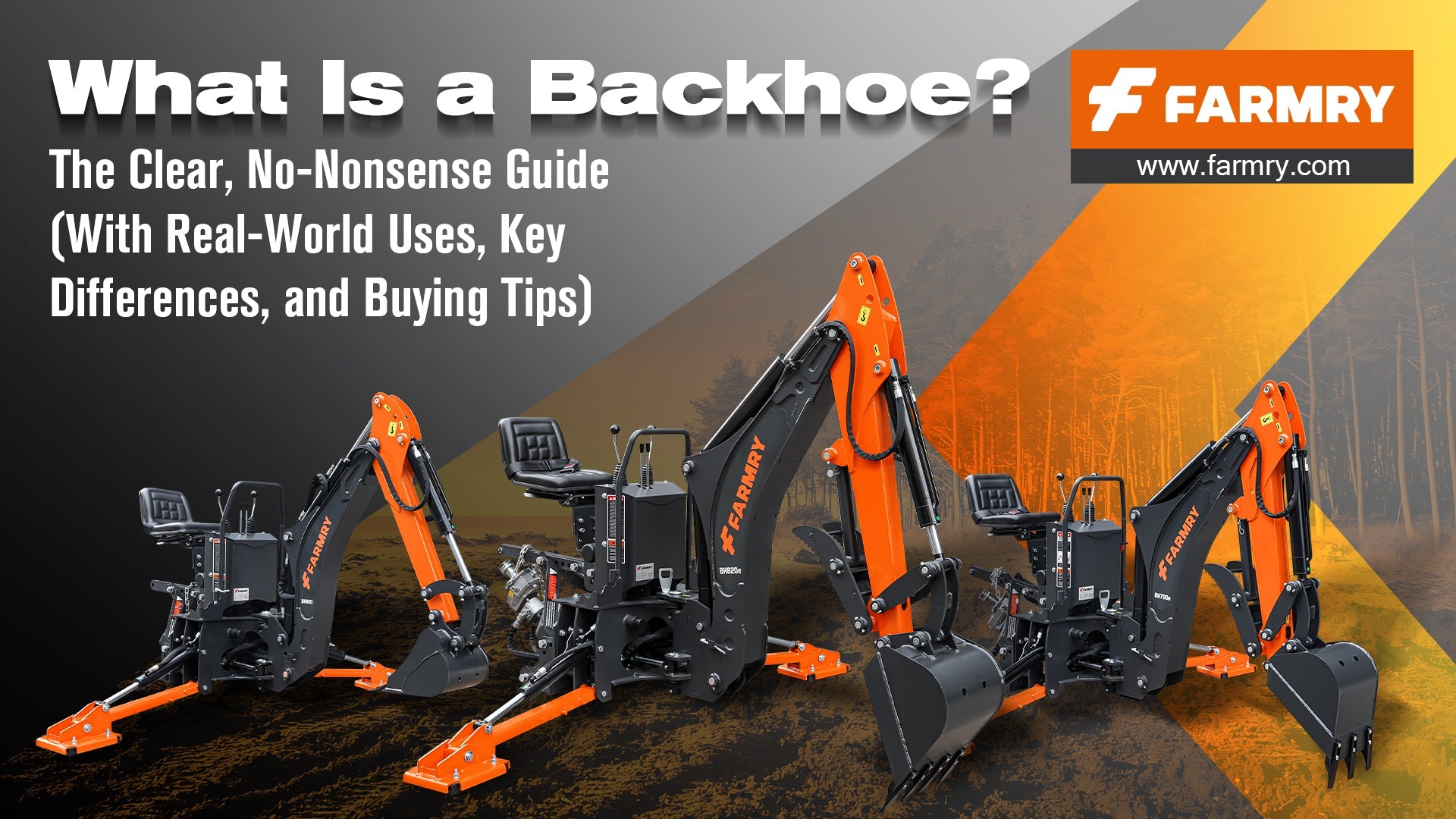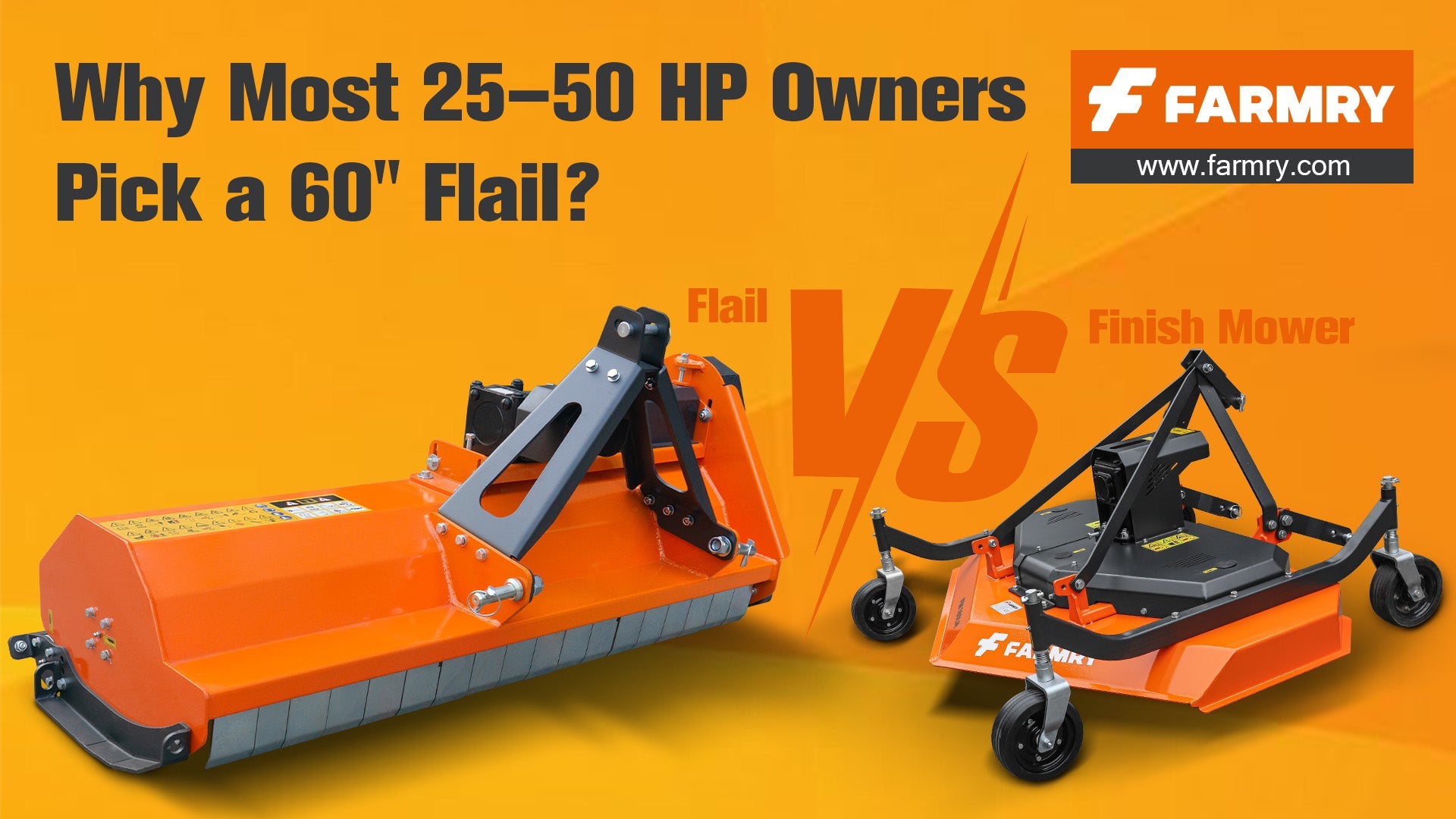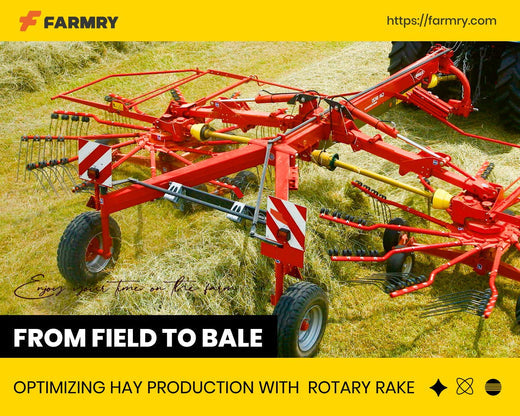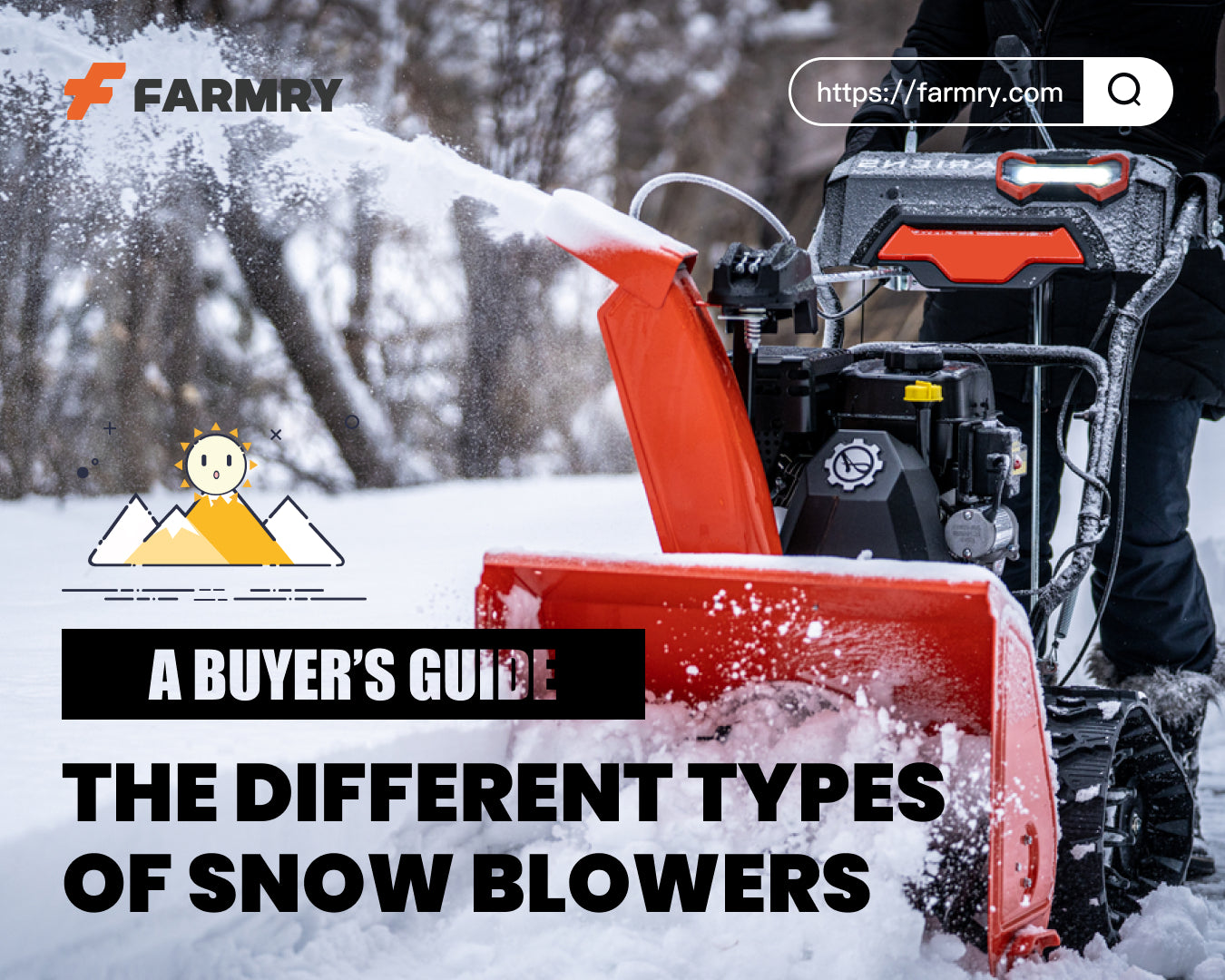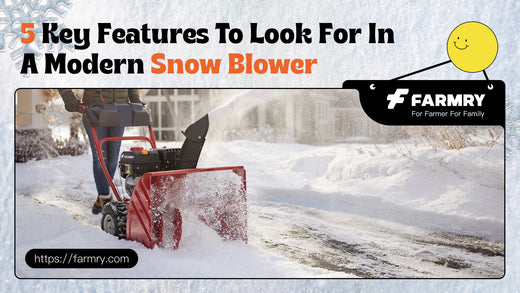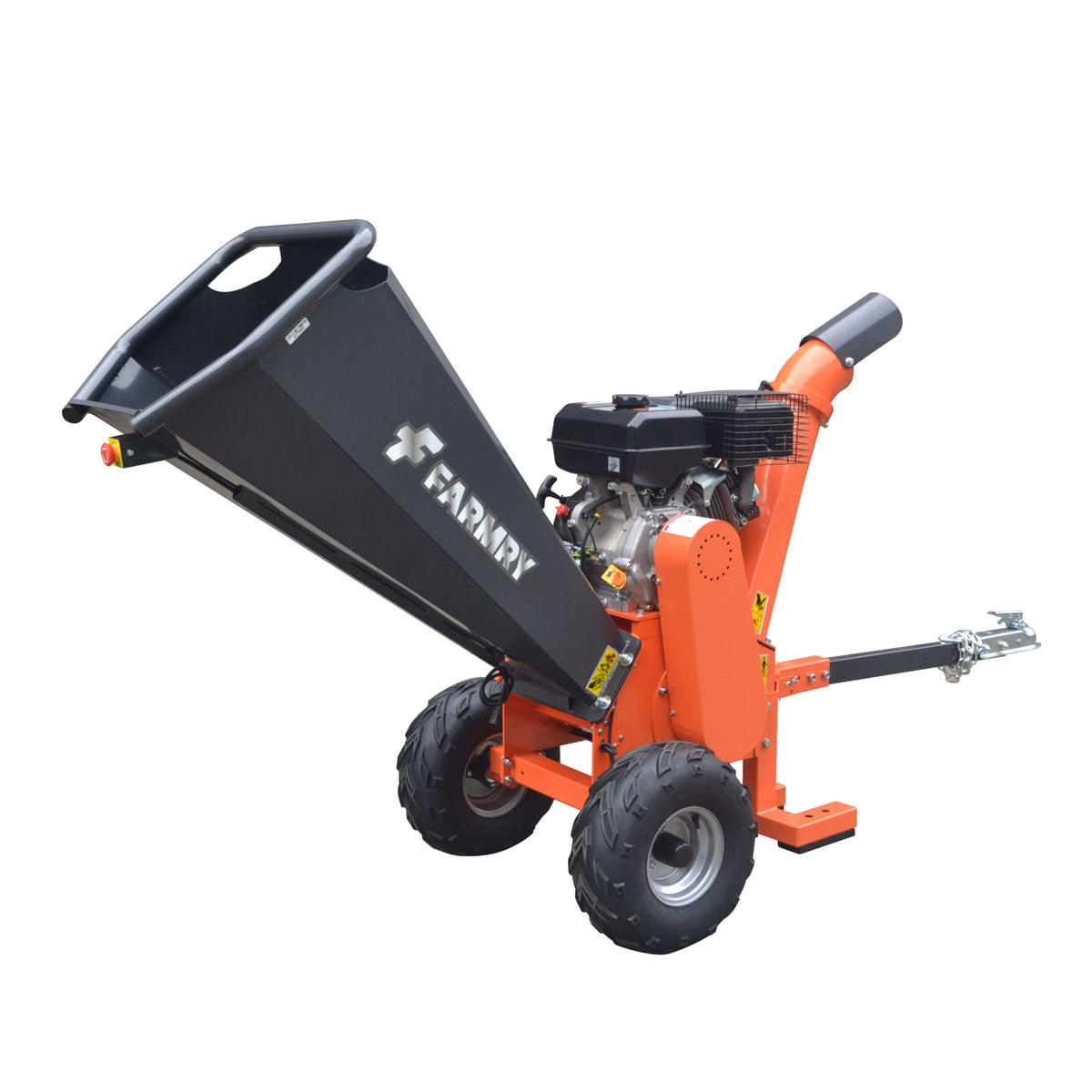How to Choose a PTO Snow Blower for Your Tractor (Quick-Hitch Guide)
 When the first real winter blast buries your lane, a well-matched PTO snow blower turns a long, cold chore into a fast, satisfying pass. But picking the right snowblower for your tractors isn’t just about price or paint. It’s about sizing, driveline angles, cutting width, skid shoes, shear bolt protection, quick hitch fitment, and real-world features that protect your machine and your driveways from damage. This guide distills practical insights from acreage owners, homesteaders, and contractors—then maps them to how a value-forward brand like Farmry equips you for confident snow removal.
When the first real winter blast buries your lane, a well-matched PTO snow blower turns a long, cold chore into a fast, satisfying pass. But picking the right snowblower for your tractors isn’t just about price or paint. It’s about sizing, driveline angles, cutting width, skid shoes, shear bolt protection, quick hitch fitment, and real-world features that protect your machine and your driveways from damage. This guide distills practical insights from acreage owners, homesteaders, and contractors—then maps them to how a value-forward brand like Farmry equips you for confident snow removal.
Step 1: Match PTO power to blower size (no guesswork)
Your tractor’s power take off (PTO) rating—often listed as PTO horsepower—sets the ceiling for what your blower can handle. Oversize a unit and you’ll fight clogs, bogging, and broken pins; undersize it and you’ll crawl at a walking pace.
Quick formula to sanity-check fit:
-
Compact tractors (18–30 PTO HP): look for ~50–64" cutting width with modest intake height and conservative auger pitch.
-
Mid-size utility (30–50 PTO HP): ~64–78" widths with taller housings and bigger auger diameters.
-
Larger farm units (50+ PTO HP): 78–92"+ widths, deep housings, and high-flow driveline components.
Farmry’s PTO snow blowers are designed with balanced rotor diameters and intake heights so smaller tractors stay in the sweet spot while bigger tractors can take a wider bite without torture testing the engine. When in doubt, choose the desired width that clears your typical path in two passes while keeping PTO load comfortably below the tractor’s limit.
High-impact tip: Snow is variable. Powder moves easily; ice crust and wind-packed drifts do not. If your area sees crusted or refrozen piles, prioritize a model with a larger impeller, robust flighting, and easy access to the shear bolt—you’ll thank yourself after the first frozen berm.
Step 2: Dial in the right cutting width for your property
The perfect cutting width isn’t “as wide as possible”—it’s the width that fits your surfaces and your tractor’s stance, weight, and turning radius.
-
Long rural driveways: Slightly wider than your track width speeds up work and reduces overlap.
-
Tight residential lanes: A moderate width with a tall intake is often faster than a huge width that forces slow maneuvering.
-
Walks around barns/garages: Consider narrower widths for tight position changes and better visibility when backing.
Farmry sizes their housings with efficient intake geometry so you get serious throughput without loading the driveline to the edge. The result: steadier ground speed, clean throws, and less operator fatigue.
Step 3: Skid shoes, scraper edge, and ground protection
Your blower’s ground interface decides whether you glide or grind. Adjustable skid shoes lift the housing just enough to float above gravel and pavers, while the scraper edge shaves clean on asphalt.
-
Gravel drives: Raise skid shoes generously to avoid shooting stones, cracking windows, or detonating shear bolt pins.
-
Smooth asphalt/concrete: Lower for a crisp scrape that limits refreeze.
-
Season change: As frost sets in and surfaces firm up, you can gradually drop the shoes for a cleaner finish.
Farmry’s adjustable skid shoes are built for quick tweaks—make small changes, run a short test pass, then fine-tune. That tiny setup step extends component life and preserves your driveway surface.
Step 4: Understand the 3-point and quick-hitch puzzle (CAT I/II)
Rear-mount PTO blowers hang on your 3 point hitch—and many buyers wisely use a quick hitch for faster mount/dismount. Fitment matters:
-
Category (“cat”) I vs. II: Pin diameter and spacing must match both the tractor and the blower.
-
ASABE compatibility: Look for gear that’s advertised as quick-hitch compatible to avoid spacer shenanigans.
-
Top-link geometry: You want adequate float so the housing can follow contour without binding.
Farmry’s housings and A-frames are equipped for straightforward quick hitch hookup on typical cat I compact tractors, with options that accommodate II on larger units. That means minimal wrench time and more snow time.
Step 5: Chute control—manual, crank, or hydraulic
Where the chute points is where your winter ends up. Efficient control isn’t fluff—it’s safety, courtesy, and speed.
-
Manual crank: Budget-friendly, reliable, but slower for frequent changes.
-
Electric rotation/deflector: Faster from the seat; good for long runs.
-
Hydraulic chute and deflector: The premium options—especially when working around cars, doors, and landscaped edges.
Farmry offers optional chute control upgrades, including hydraulic chute rotation kits that give the operator precise aim from the seat. That precision prevents blowback and reduces clean-up passes—ease and fast wins in every storm.
Step 6: Auger and impeller design (move more, clog less)
Two-stage blowers use an auger to feed snow into a high-speed impeller that launches it. Performance depends on the intake height, auger pitch, impeller diameter, and housing clearance.
-
Powder: Almost any two-stage moves it; throughput is king.
-
Wet snow: Look for tight impeller tolerances and solid discharge geometry.
-
Crusted berms and ice: Stout auger flighting with reliable shear bolt protection prevents expensive failures.
Farmry’s two-stage designs pair aggressive flighting with balanced rotor assemblies to limit vibration and keep throws tall and consistent—even when the storm turns heavy and sticky.
Step 7: Shear bolt protection and serviceability
Think of a shear bolt as the sacrificial hero. It breaks to protect expensive driveline parts. On a well-designed machine, it’s easy to access, easy to replace, and stocked in your shop.
-
Keep extra bolts on the tractor.
-
Learn the replacement steps before a blizzard arrives.
-
Use manufacturer-spec hardware—random hardware-store bolts can be too hard or too soft.
Farmry locates shear points for quick swaps and clearly marks them for the operator. It’s a small design choice that makes a big difference when your hands are cold and the wind is howling.
Step 8: Driveline angles, PTO shaft length, and weight balance
A whisper-quiet driveline is a sign of a happy blower. Excessive u-joint angles or an improperly sized PTO shaft will rumble, bind, or worse.
-
Set shaft length correctly: Too long and you’ll bottom out at full lift; too short and you risk disengagement.
-
Check angles at operating position: Level the blower for the posture you’ll actually use.
-
Verify total weight: Heavier blowers track well, but match that weight to your lift capacity and rear ballast.
Farmry includes clear guidance on shaft setup and recommends balanced ballast so your machine stays planted without overloading the rear axle.
Step 9: Visibility, lighting, and operator comfort
Snow is deceptive—whiteout glare by day, inky black by night. Add blowing powder and you need every bit of visibility help you can get.
-
Mirrors/camera: For long reverse runs.
-
Work lights: LED floods high and low reduce shadows and reveal curbs.
-
Cab comfort: Heat keeps windows clear; open-station operators should consider windbreaks and face shields.
Farmry’s compact housings and tidy chute profiles help you see the ground edge and the chute arc, so you can place snow precisely, not blindly.
Step 10: Review the must-have and nice-to-have features
Standard features to look for:
-
Adjustable skid shoes
-
Replaceable scraper edge
-
Accessible shear bolt and PTO shaft shield
-
Quick-adjust chute deflector
-
Clear decal set for safety and position reference
Optional upgrades worth considering:
-
Hydraulic chute rotation and deflector
-
Heavy-duty scraper edge for aggressive work
-
Poly skid shoes for delicate pavers
-
Drift cutters for tall berms
-
Parking stand for painless storage
Farmry bundles the standard essentials and offers options that you can add later if your routes change.
Quick-Hitch Setup: a 5-minute playbook
-
Inspect pins & spacing: Confirm cat I or II, then verify your quick hitch latch closes fully.
-
Hook lower points: Back in slowly; lock both hooks.
-
Top link / adapter: Attach the top hook or adapter block for proper geometry.
-
PTO shaft: With the blower lowered to operating height, test slip-yoke travel; trim if needed.
-
Driveline test: Spin by hand (engine off) to confirm free movement; then engage pto at idle and listen. Smooth = good.
With Farmry’s quick-hitch-friendly frames, the whole sequence is clean and repeatable—less wrestling, more blowing.
Protecting your driveway and your gear
-
Gravel protocol: Lift the skid shoes, lower your ground speed, and angle the chute away from cars and glass.
-
Pavers & decorative borders: Use poly shoes and a lighter scraper setting to prevent scuffs.
-
Avoiding damage: Respect hidden hazards—hose bibs, clean-outs, steel edges on steps. If you hit something, stop, clear, and review the area before resuming.
Farmry’s housing edges are built tough, and the adjustable shoe system gives you the finesse to safeguard surfaces while keeping productivity high.
What makes Farmry a smart value pick
-
Balanced engineering: Efficient intake and rotor geometry move more snow with less strain.
-
Serviceability: Logical shear bolt locations, straightforward belt access, and parts you can actually get.
-
Compatibility: Thoughtful 3 point hitch frames with quick hitch alignment for common compacts.
-
Upgradeable control: From manual cranks to hydraulic chute packages—grow your setup as your routes expand.
For acreage owners and small contractors who demand reliable throughput without premium pricing, Farmry’s lineup hits the sweet spot—serious work, clear upgrade paths, and practical support.
Troubleshooting quick hits (because storms don’t wait)
-
Clogging in wet snow: Slow ground speed, bump engine RPM, raise the intake slightly using skid shoes, and shorten throw distance by adjusting the chute deflector.
-
Frequent shear-offs: Inspect for foreign objects, verify auger is free, and confirm you’re using the correct shear bolt grade.
-
Poor throw distance: Check impeller clearance, belt tension, and ensure the pto is reaching rated speed.
-
Vibration: Recheck driveline length and u-joint angle; look for packed ice on the rotor.
Buying checklist (print-friendly)
-
Tractor PTO HP vs. blower cutting width and intake height
-
Cat I/II pin sizes, quick hitch compatibility, and top-link angle
-
Adjustable skid shoes and a replaceable scraper edge
-
Shear bolt access and spares included
-
Hydraulic chute or other optional controls (if you change direction often)
-
Belt/chain drive inspection points and grease fittings
-
Overall weight vs. lift capacity and ballast plan
-
Lighting and operator comfort for night work
-
Parts availability and support documentation
-
Storage footprint and off-season corrosion plan
Farmry checks these boxes with standard essentials and logical upgrades, letting you tailor the features to your routes instead of compromising on capability.
FAQs
-
Will a PTO blower work on both paved and gravel driveways?
Yes—set your skid shoes higher on loose surfaces to prevent rock ingestion and broken shear bolt events. Lower them for a crisp scrape on asphalt. -
How fast should I drive?
Let the pto speed and blower sound guide you. If the tone drops or the engine labors, slow down. The goal is steady feed, not sprinting. -
Do I need hydraulic chute control?
If you work around vehicles, doorways, or neighbors, it’s a high-value upgrade. Small time savings per turn multiply over a storm. -
What about crusted snow and ice?
Choose a blower with strong auger flighting and accessible shear bolt protection. Keep a bar for clearing the intake (engine off) and avoid forcing packed ice through at high load.
The bottom line
Choosing the right PTO snow blower is about balance: tractor power, cutting width, intake height, and control. Get the 3 point fit and quick hitch geometry right, protect the surface with tuned skid shoes, and pick the features—like hydraulic chute control—that make your workflow safer and faster. Farmry’s PTO snow blowers are built to deliver efficient throughput, simple service, and confident compatibility for compact and utility rigs alike.
Ready to compare models and features?
Browse the Farmry PTO snow blower collection for detailed specs, user reviews, and the latest deals.
Top picks for different needs:

